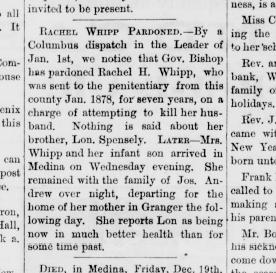After organizing my files, I quickly discovered that a LOT of documentation was missing for some of my closest relatives. The birth, marriage & death dates were listed. But no documentation. This was because I couldn't afford the price of obtaining the documents for collateral lines, cousins, aunts and uncles. Until more recently.
No, I did not get a huge raise at the library, win the lottery, or inherit a fortune. It is just that a lot more information is more available. Ancestry Library Edition and FamilySearch.org helped fill in some of the gaps. But some of the information was too recent to be available online, for privacy reasons. Specifically, I was looking for the birth certificates for my mother's siblings; two brothers and one sister.
Luckily, here in Ohio you can obtain birth certificates for anyone born in Ohio after 1908 from your local health department. A certified copy costs $22. But, if you don't need a certified copy, and I didn't, you can request to see the certificate and then take a picture of it!
 |
| Example of a certified birth certificate. |
 |
Example of an "uncertified" Ohio birth certificate. Look at all the information that is left off the certified copy! |
So armed with their three names, dates of birth, places of birth and their parents names, I headed over to the Medina County Health Department on Ledgewood Drive (right next to WalMart).
 |
| Medina County Health Department, 4800 Ledgewood Drive, Medina. |
The clerks in the Vital Statistics division of the Health Department are always very friendly and helpful. When you fill out the paperwork to request to see the copy of a birth certificate, write "For Genealogical Purposes" across the top. The clerks then know to not make a certified copy, but to just print it out. In Medina, they stamp "View Only" across the copy.
However, they could only find one of the birth certificates. The one for my Mom's younger brother, Charlie. They couldn't find the certificates for John Jr. nor Dixie. After their mother died, Dixie had been adopted by a family named Roberts. The clerk said I would have to know the adoptive mother's name to find her certificate. But John? Why wasn't his certificate showing?
In certain places and times, compliance with the law to register births wasn't consistently followed. But during the 1930's compliance in Ohio was pretty complete, even in the cases of home births. Both my mother and Uncle Charlie had been born at home.
Elated at having at least one of the certificates, I went home to review my files to see if there was a piece of information missing that might help locate Uncle John's birth certificate. In all of the siblings' files was a printout from Ancestry Library Edition for the Ohio birth indexes. Uncle John's printout listed a file number. I checked Uncle Charlie's printout with the picture of the certificate and noticed the certificate number and file number were nearly identical!
Now armed with the certificate number, I made another trip to the Health Department. BINGO! They easily found Uncle John's certificate. Perplexed as to why it did not show up during the first search, the clerk looked in the index and found that he was indexed under the name Raymond Sherwood Mason, instead of John Sherwood Mason, Jr.! Bizarre!
If not for the persistence of the clerk and myself, and using multiple sources, we wouldn't have found it!
Oh, and the clerk promised to fix the index.
Oh, and the clerk promised to fix the index.

























